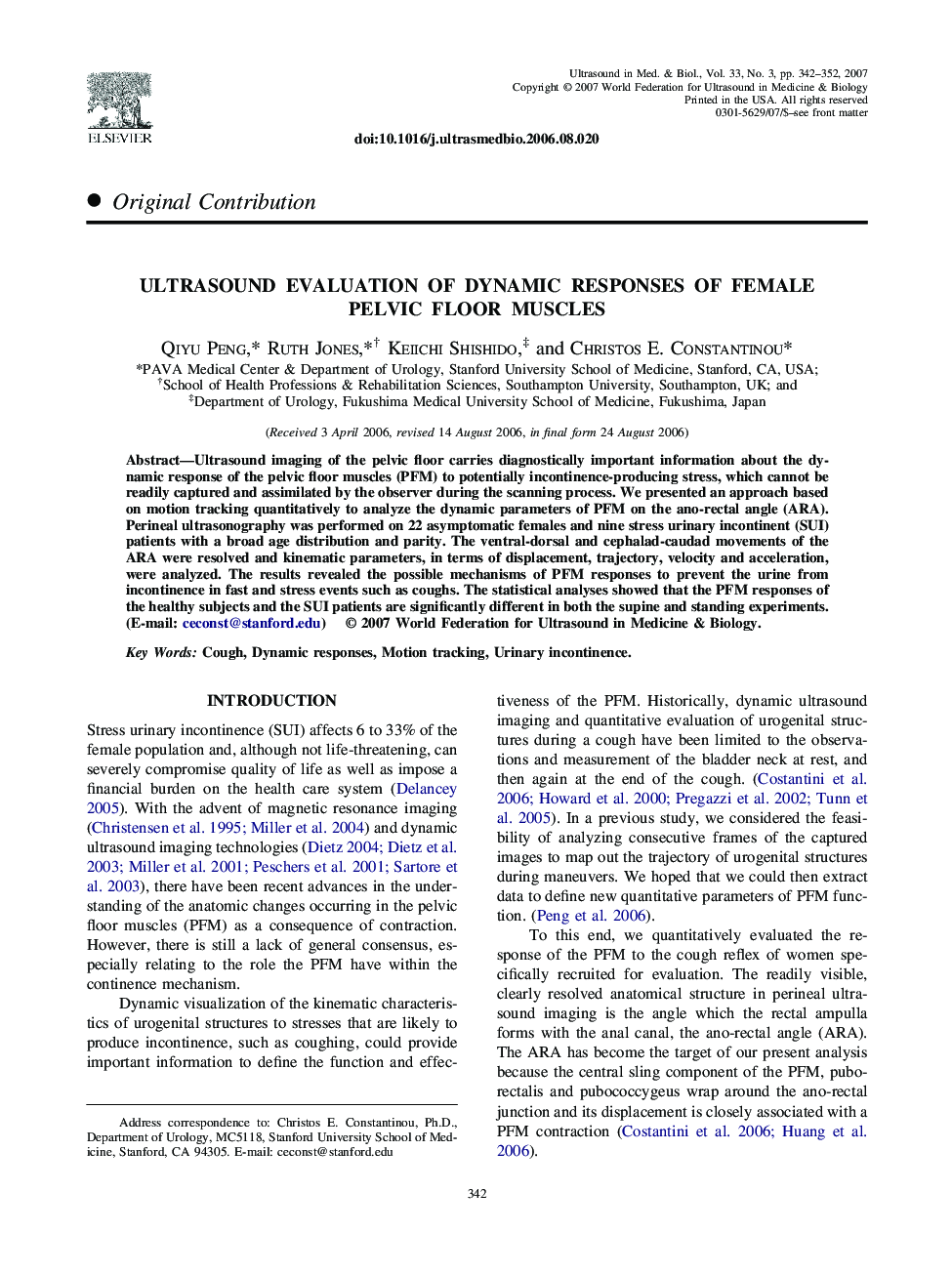| Article ID | Journal | Published Year | Pages | File Type |
|---|---|---|---|---|
| 1762601 | Ultrasound in Medicine & Biology | 2007 | 11 Pages |
Abstract
Ultrasound imaging of the pelvic floor carries diagnostically important information about the dynamic response of the pelvic floor muscles (PFM) to potentially incontinence-producing stress, which cannot be readily captured and assimilated by the observer during the scanning process. We presented an approach based on motion tracking quantitatively to analyze the dynamic parameters of PFM on the ano-rectal angle (ARA). Perineal ultrasonography was performed on 22 asymptomatic females and nine stress urinary incontinent (SUI) patients with a broad age distribution and parity. The ventral-dorsal and cephalad-caudad movements of the ARA were resolved and kinematic parameters, in terms of displacement, trajectory, velocity and acceleration, were analyzed. The results revealed the possible mechanisms of PFM responses to prevent the urine from incontinence in fast and stress events such as coughs. The statistical analyses showed that the PFM responses of the healthy subjects and the SUI patients are significantly different in both the supine and standing experiments. (E-mail: ceconst@stanford.edu)
Related Topics
Physical Sciences and Engineering
Physics and Astronomy
Acoustics and Ultrasonics
Authors
Qiyu Peng, Ruth Jones, Keiichi Shishido, Christos E. Constantinou,
